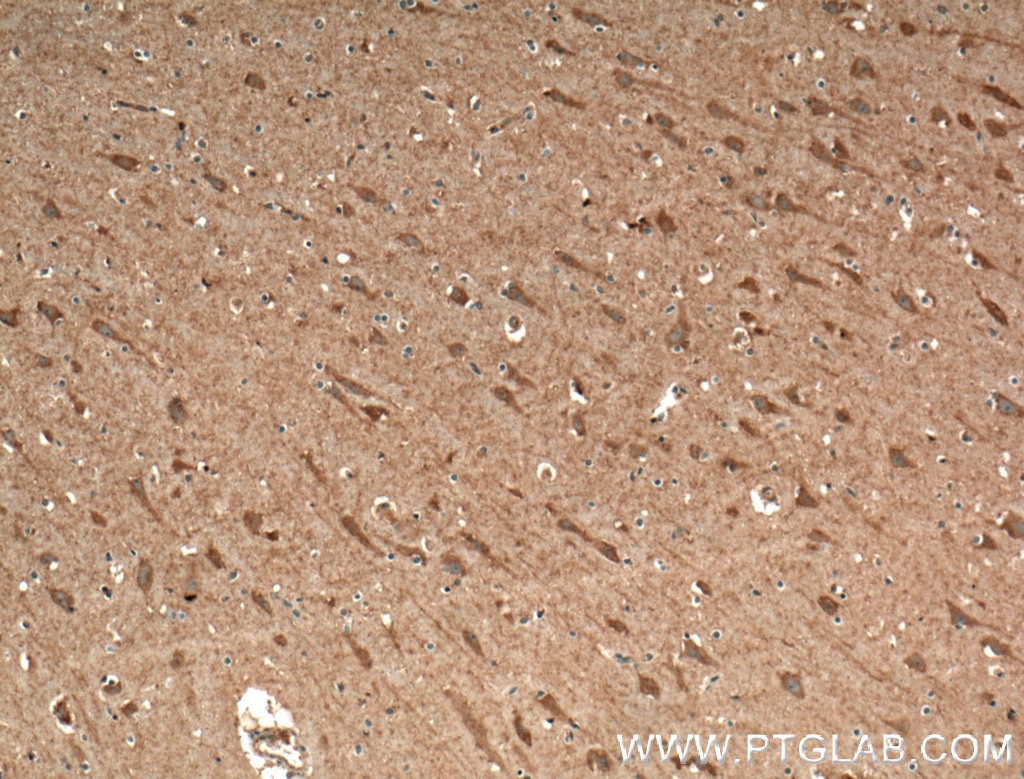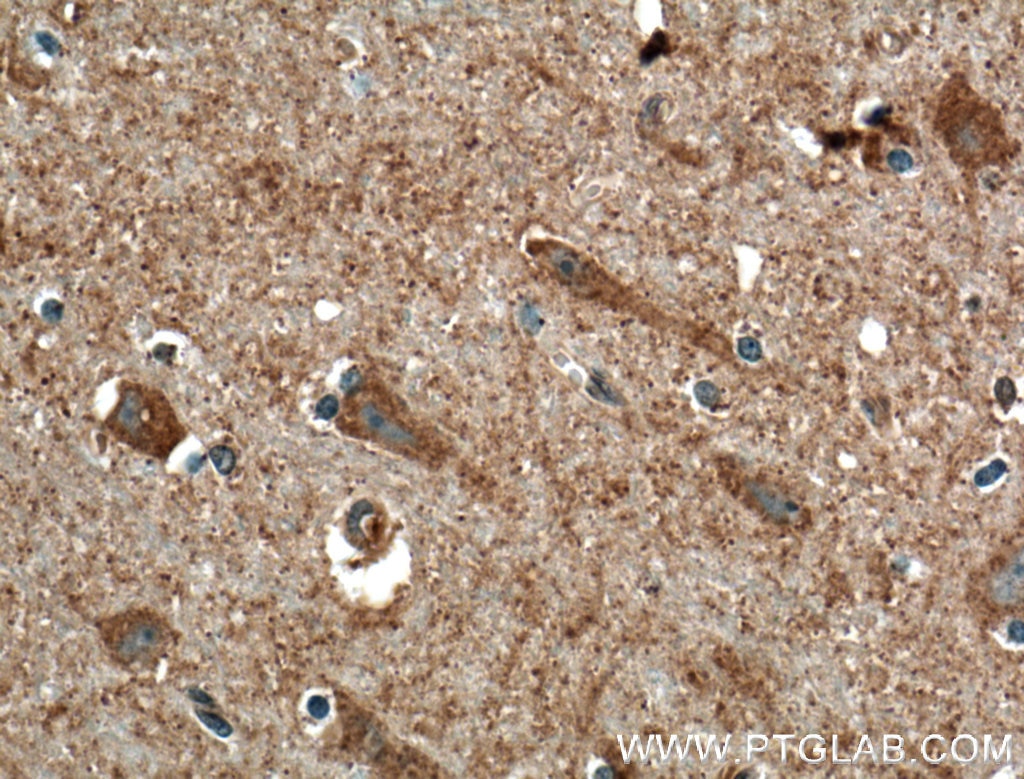Tested Applications
| Positive WB detected in | rat brain tissue |
| Positive IHC detected in | human brain tissue Note: suggested antigen retrieval with TE buffer pH 9.0; (*) Alternatively, antigen retrieval may be performed with citrate buffer pH 6.0 |
Recommended dilution
| Application | Dilution |
|---|---|
| Western Blot (WB) | WB : 1:500-1:2000 |
| Immunohistochemistry (IHC) | IHC : 1:50-1:500 |
| It is recommended that this reagent should be titrated in each testing system to obtain optimal results. | |
| Sample-dependent, Check data in validation data gallery. | |
Published Applications
| WB | See 1 publications below |
Product Information
27225-1-AP targets CACNA1E in WB, IHC, ELISA applications and shows reactivity with human, mouse, rat samples.
| Tested Reactivity | human, mouse, rat |
| Cited Reactivity | mouse |
| Host / Isotype | Rabbit / IgG |
| Class | Polyclonal |
| Type | Antibody |
| Immunogen |
CatNo: Ag25944 Product name: Recombinant human CACNA1E protein Source: e coli.-derived, PGEX-4T Tag: GST Domain: 801-900 aa of NM_000721 Sequence: MEAPTMNPLNPLNPLSSLNPLNAHPSLYRRPRAIEGLALGLALEKFEEERISRGGSLKGDGGDRSSALDNQRTPLSLGQREPPWLARPCHGNCDPTQQEAG Predict reactive species |
| Full Name | calcium channel, voltage-dependent, R type, alpha 1E subunit |
| Calculated Molecular Weight | 262 kDa |
| Observed Molecular Weight | 240 kDa |
| GenBank Accession Number | NM_000721 |
| Gene Symbol | CACNA1E |
| Gene ID (NCBI) | 777 |
| RRID | AB_2880808 |
| Conjugate | Unconjugated |
| Form | Liquid |
| Purification Method | Antigen affinity purification |
| UNIPROT ID | Q15878 |
| Storage Buffer | PBS with 0.02% sodium azide and 50% glycerol, pH 7.3. |
| Storage Conditions | Store at -20°C. Stable for one year after shipment. Aliquoting is unnecessary for -20oC storage. 20ul sizes contain 0.1% BSA. |
Background Information
CACNA1E is a gene encoding the ion-conducting α1 subunit of R-type voltage-dependent calcium channels, genetic variability of CACNA1E is associated to risk of type 2 diabetes, insulin resistance and impaired insulin secretion in nondiabetic subjects.
Protocols
| Product Specific Protocols | |
|---|---|
| IHC protocol for CACNA1E antibody 27225-1-AP | Download protocol |
| WB protocol for CACNA1E antibody 27225-1-AP | Download protocol |
| Standard Protocols | |
|---|---|
| Click here to view our Standard Protocols |








